Here are today’s pictures – some from the EVA, some about the 3D
printing mentioned in the Journalist report, and of course the
Astronomer’s picture!
Journalist Report – February 12th
Sol 12: Focus on: 3D printing – How to repair or construct things on Mars.
Author : Pierre Fabre
Hi everyone, welcome back for a new episode of “Focus on”! In today’s episode we are going to talk about 3D printing with Maxime. It is going to be super cool!
But, as always, we are going to talk about what happened on Mars during this Sol 12.
First, as today was a Saturday, we didn’t have sports this morning for the same reasons as last week. I think it is worth mentioning it because it felt so good to stay in bed a little longer. Everyone looked happier and smelled definitely better than usual at breakfast.
Then, the day was similar to a week day. On Mars, we work on Saturdays!
We started this day by an EVA. As I told you yesterday, we went back to the Special Region to do drone mapping. This time, Marion and I, who stayed at the Hab yesterday, were part of the team and Maxime was our EVA leader.
We started our EVA, as usual, by changing the battery from the LOAC experiment. Then we made a first stop at the crossroad with Galileo Road. I wanted to map the part of the Hab Ridge situated after the North Ridge for my drone mapping experiment. Everything went well and I will soon have a beautiful 3D map to analyse. I’m starting to be more efficient and confident with the drones and it is very satisfying. Even if I never told you before, I think you can easily imagine that manipulating and operating a drone with a spacesuit and gloves is not easy at all. Next week, we are going to do another round of comparing how my crewmates perform on this terrain regarding whether or not they have the 3D map. The episode of “Focus on: Drone mapping” in which I am going to explain you everything is coming soon so stay tuned!
After this stop, we kept going North with the rovers until reaching the Special Region. It was pretty similar to the description our crewmates gave us, except that in reality it was a lot more impressive and beautiful. We were really amazed by the view we had from the top of the Ridge. I took some really nice drone pictures and videos up there. We will definitely find a way to show you those cool videos when we will be back on Earth I promise, but you can already have a taste with the photos.
It was a 4-hour long EVA, the longest ever made in this crew, and we were very tired when we came back. When we went upstairs after leaving our spacesuits, we had the best surprise you can expect when coming back from an EVA like this. Our lovely crew mates had cooked fried rice, a lot of fried rice. It was the best thing I’ve tasted since my arrival on Mars (yes, better than the famous Martian Pizza). If some of you want the recipe, I can ask my Commander and put it in a next report. (I will probably do it anyway as I will not receive your feedbacks).
This afternoon was a pretty calm one. Some crew members, including me, took that opportunity to take a well-deserved shower. On Mars, we don’t take shower as frequently as on Earth. The average time between two showers in the crew is one week. Now you start to understand why I said before that we usually smell bad at breakfast. As mentioned in the “Focus on: Water on Mars” episode, water on Mars is even more precious than on Earth so we have to use it carefully!
This afternoon, our team of 3D printing engineers, Maxime and François, finally managed to print the piece to assemble the base and the mast of the Mega-ARES experiment. This was a very long journey with lots of ups and downs. Thanks to their hard work, we will soon be able to assemble the experiment during an EVA and start gathering precious data for CNRS.
Talking about 3D printing, it is time to start this new episode of “Focus on” with Maxime! Let’s see what we talked about!
“-Hi Maxime! How are you today?
-Super thank you!
-Maxime, I asked you to do this episode of “Focus on: 3D printing” because you are in charge of a 3D printing experiment. But first let me ask you something. Why is 3D printing relevant for space application?
-As you know, on a space mission we are isolated and it is very difficult to have new objects from the Earth. On Mars, if we break our hammer, we have to wait 6 months before getting a new one. That is why we use 3D printing. We are able to build and replace any objects to optimize our experiments for example. In the International Space Station, there is a 3D printer, and the French astronaut Thomas Pesquet used it to print… a fork!
Moreover, the European Space Agency is working on new printers able to print buildings on the Moon from the lunar regolith. Hopefully, we will be able to see them working at the end of the decade.
-Ok I see, it is very convenient! And now, can you explain what is the objective of your experiment?
-Through the composite repairing in a frugal context we want to demonstrate the relevance of the use of additive fabrication in space applications. This project is held by Pr. Yves Gourinat, professor of Mechanical Engineering and Structures at ISAE-SUPAERO.
In our context of a Martian Life Simulation, we had to choose a printer according to the trio Volume – Mass – Energy, the main parameters of space exploration. Thanks to our school, we are able to use the 3D printer « Creality CR-10 Series V2 » which respects the parameters below.
The first operation consists in repairing an impacted carbon structure. During an EVA, I saw a small impact on our HAB. On Mars, this one can lead to a leak and put us in danger in the station. With the software AutoDesk Fusion 360, I designed a fitting piece and printed it with our 3D-printer with the help of our engineer François. Obviously, we are not allowed to modify the Hab but with this experiment we are able to prove the relevance of a 3D-printer for a space application.
-Ok nice! And do you use the 3D printer for other purposes?
-As I mentioned at the beginning you can use the 3D-printer for many reasons. On our side we used the 3D-printer twice.
Our HSO Julie aka July works on a recycling water experiment and she asked me to participate by printing a specific funnel for her new dispositive named « Dudish » in the memory of our Botanist Raphaël, who couldn’t come to MDRS.
And Clément asked me to print a piece to maintain the mast of the instrument Mega-Ares.
-Wow, so cool! There are so many applications of 3D printing, I’m not surprised that some people want to use it in space application! Maxime, thank you very much for your time, it is a really cool experiment that you have and I enjoyed talking about it with you!”
That’s it for today’s “Focus on” episode I hope you enjoyed it as much as I did! I also hope you learned something about 3D printing. If you like this format, stay tuned because another episode is coming soon!
Operations Report – February 12th
Crew 240 Operations Report 12-02-2022
SOL: 12
Name of person filing report: François Vinet
Non-nominal systems: NA
Notes on non-nominal systems: NA
ROVERS
Spirit rover used: yes
Hours: 155.5
Beginning charge: 100%
Ending charge: 75%
Currently charging: left uncharged, handled by Atila
Opportunity rover used: no
Hours: 83.7
Beginning charge: NA
Ending charge: NA
Currently charging: handled by Atila
Curiosity rover used: no
Hours: 167.1
Beginning charge: NA
Ending charge: NA
Currently charging: handled by Atila
Perseverance rover used: yes
Hours: 227.0
Beginning charge: 100%
Ending charge: 43%
Currently charging: left uncharged, handled by Atila
General notes and comments: NA
Summary of Hab operations:
WATER USE: 27 gallons
Water (static tank): 240 gallons
Water (loft tank): 15 gallons
Water Meter: 0155755.6 units
Static to Loft Pump used – no
Static tank pipe heater (on or off): on
Static tank heater (On or off): on
Toilet tank emptied: no
Summary of internet: NA
Summary of suits and radios: NA
Summary of GreenHab operations:
WATER USE: 12 gallons at 11am
Heater: On
Supplemental light: On
Harvest: N/A
Summary of ScienceDome operations:
Dual split: off
SOC: 72% at 6.10pm
Summary of RAM operations: caulk gun and heat gun used
Summary of any observatory issues: NA
Summary of health and safety issues: NA
Questions, concerns and requests to Mission Support: NA
Astronomy Report – February 12th
Name: Maxime Jalabert
Crew: 240
Date: 12 feb 2022
MDRS ROBOTIC OBSERVATORY
Robotic Telescope Requested (choose one) : MLC-RCOS16
Objects to be Imaged this Evening: M78, M51, M68
Images submitted with this report: Object M63_220212
Problems Encountered: None
MUSK OBSERVATORY
Solar Features Observed: /
Images submitted with this report: /
Problems Encountered: /
Astronomy Report – February 12th
Name: Maxime Jalabert
Crew: 240
Date: 12 feb 2022
MDRS ROBOTIC OBSERVATORY
Robotic Telescope Requested (choose one) : MLC-RCOS16
Objects to be Imaged this Evening: M78, M51, M68
Images submitted with this report: Object M63_220212
Problems Encountered: None
MUSK OBSERVATORY
Solar Features Observed: /
Images submitted with this report: /
Problems Encountered: /
EVA Report – February 12th
Crew 240 EVA Report 12Feb2022
EVA # 13
Author: Maxime Jalabert
Purpose of EVA: 3D Mapping, drone shots of the EVA area, and changing batteries for experiments.
Start time: 9:35
End time: 13:20
Narrative: This EVA was surely one of the best for us. The 3D Mapping went well (approx. 30 mins) and we took some drone shots of the area while we were on the crest (see photos). There were a lot of martians with human shapes on the road but we avoided any contact.
I noticed that the battery of Perseverance was running out quite quickly compared to Spirit and Curiosity last time, so if we need to go to an other position that far from the station we will surely use Spirit and Curiosity.
Destination:Special Region, exploration zone D
Coordinates (use UTM NAD27 CONUS): 518000, 425600
Participants: Maxime Jalabert, Marion Burnichon, Pierre Fabre
Road(s) and routes per MDRS Map: Cow Dung Road
Mode of travel: Rovers, foot
Sol Summary Report – February 12th
Crew 240 Sol Summary Report 12Feb2022
Sol:12
Summary Title: Not so busy weekend
Author’s name: Clément Plagne
Mission Status: Nominal
Sol Activity Summary: While a team of three made their way to the Special Region in order to take the drone out for a spin (among other things to accomplish during the EVA), the rest of the crew was busy in the Hab and the RAM, some trying different setups for water recycling implements, others working on 3D prints and wiring for another atmospheric experiment.
The afternoon felt calm, with most of the crew taking some time, each at their own moment, to rest from the week and the numerous EVAs performed during those past days. Work was still performed for those who needed things done, and the fact of the matter is that days are too few to be spent idly, so there will be another EVA tomorrow to get more work done, and so on and so forth. But for now, it’s going to be more about group games and relaxation exercises.
Look Ahead Plan: Setting up additional atmospheric experiments tomorrow, making a nice big meal for Sunday lunch.
Anomalies in work: None to report.
Weather: Fair
Crew Physical Status: All is well
EVA: One, performed nominally
Reports to be filed: Sol Summary, EVA Report, EVA Request, Journalist Report, Crew Pictures, HSO Report, Operations Report, Astronomy Report,
Support Requested: None in particular
Crew Photos – February 11th
Journalist Report – February 11th
Sol 11: Interview with: Engineer – The man who keeps the station in one piece
Hi everyone! Today is a new episode of “Interview with”. We are going to talk with François, our crew engineer I’ve been mentioning multiple times as our hero. I can’t wait to show you what we talk about but before, let’s talk a bit about this Sol 11 on Mars.
Today, we realised that we are closer to the end of this mission than we are to its beginning. For some members of the crew, it’s good news because they miss their families and friends and are becoming nostalgic about life on Earth. Apart from that, the crew is doing well, everyone is healthy and in good shape. This was mostly for the families who are reading this report, there is nothing to worry about.
For her second time as EVA leader, Julie decided to explore a very mysterious region of the surroundings of the station. This region is located far north from the station and it is called: the Special Region. Even on our map, the zone is partially hidden by red stripes that give it a forbidden aspect. My crewmates decided to go there to find out what was truly there with the idea of potentially going back tomorrow to map the area with the drone if it was worth it. They went as close as they could by the road with the rovers. Then, they climbed on a ridge and were amazed by the view. If you looked to one side of the ridge, you could see a really narrow canyon that would be very interesting to 3D map. If you then looked to the other side of the ridge, the landscape was now made of dunes with beautiful red colours. They climbed down the ridge and started to explore the canyon. I can’t wait to go there tomorrow to map the area with the drone and see this incredible view from the ridge with my own eyes!
In the meantime, Marion and I stayed at the Hab and performed the TELEOP experiment. I’m starting to appreciate to teleoperate this rover on the moon: going to a particular zone, grabbing a sample and docking it to the lander. It is pretty similar to a video game! It is definitely funnier that the « shape test » from the experiment of the University of Lorraine. But they are both really interesting human factors experiments.
Talking about the « shape test », those who were spared yesterday had to do it this afternoon. It is pretty funny to see them walk into their room full of life and joy and leaving it dead inside. I’m not exaggerating (ok maybe a bit), this is really hard when you are as tired as we are. But this was the last day, there won’t be human factors experiments this weekend and that is such good news.
Today we had also good news from the GreenHab. First, the soy beans Julie planted some days ago are starting to grow and we can already see a green thing making its way out of the soil. It was the first thing she had ever planted so she was really excited when she discovered it this morning. She has also recently put the Spirulina in the two solutions I talked about in a previous report. We hope the Spirulina will grow well and that we will see the difference between the two solutions which have, as you already know, two different concentrations of filtered and stabilised urine. It is fine if you don’t remember, we will do an episode of « Focus on » to talk in more details about this cool experiment, so stay tuned!
Maxime, our astronomer, also managed to find time to edit some observations we received from the telescope of New-Mexico during the night. He turned those observations of M-42, the object he made the telescope point at, into a really amazing picture. He will soon be able to explain you better than me his work as an astronomer in the next episode of « Interview with ».
But today it’s François’ turn! Let’s see what we talked about this afternoon in the RAM!
“-Hi François how are you? Can you introduce yourself for those who don’t know you yet?
-Yes sure! I am 21 years old, I am a student in aerospace engineering at Supaero, in France. I am currently doing a double degree in engineering physics at KTH, an engineering school in Stockholm, Sweden. In my curriculum, I also did an internship at the German Space Agency (DLR) on the optimization of rocket trajectories. And apart from my curriculum, I really like climbing and mountaineering.
-Ok cool! So, in the crew you are the Engineer, can you explain what does that means?
-My role is divided into 3 parts. The first consists of daily checks of the functioning of the station. We try to live as much as possible on our own resources or at least in the short circuit which implies having a total trust in the devices that surround us. I therefore check the water level every day in the tanks, the production of electricity, the level of charge of the suits and rovers, the filling of the toilets…
Then I have to fix everything that misbehaves in the station. A poor quality of water or air involves a change of filters… Right now, I work on the batteries of the suits that seem to work badly. I have access to the RAM (Repair and Assembly Module) where many devices are at my disposal to try to adjust these problems (multimeter, soldering iron…). But let me reassure you, most of the time, the station is fully functional.
Finally, and this is the part I prefer, I help other crew members in their personal experiments. I had to repair a 3D printer with Maxime for his experiment, help Julie make a water recycling system…
-Wow this is cool! And what is your favourite part of the job?
-My favourite part is without hesitation the last of which I have just talked to you about, the one where I help the others in their experiments. The repair of the 3D printer is in particular a good memory. We spent 2 days with Maxime to disassemble and repair it, replace defective parts and see it again functioning was very satisfactory.
-And is there something you don’t like in your job?
-What I like the least in my activities may be the repetition of my activities with all the daily checks that are repeated and especially the emptying of the toilet. However, it is necessary so I do it with a good heart (and I especially hope that the crew will get me a burger after the mission for all the times I emptied the toilet). I think that the feeling of being useful to the crew and to a smooth running of the mission is an increasingly important motivation for me, as the mission advances. Indeed at the beginning of the mission, it is the excitement that motivates, realizing new tasks being always enjoyable. But the more the mission is moving, the more important it is to have a lasting motivation for the daily tasks.
-We will definitely offer you a burger when we come back on Earth, you deserve it! On a more personal subject, why did you choose to participate in a MDRS mission?
-I chose to participate in this analogue mission to approach even more the field of space exploration. During the 2 years of preparation, I had to discuss with many researchers, inquire about inhabited flights and Martian exploration missions … It was very beneficial for me. I also think that this mission is a good way to help the research at our level. We participate in experiments of laboratories on human factors which study our psychological and physiological evolution during the mission. I hope the data gathered will be relevant and will help them in their work.
-I hope too! Thank you very much for your time, it was a very cool interview and thank you one more time for the work you do every day in the station!”
That’s it for the interview with our Engineer, I hope you enjoyed it! Remember that next time it will be Maxime’s turn so stay tuned!
Astronomy Report – February 11th
Name: Maxime Jalabert
Crew: 240
Date: 11 feb 2022
MDRS ROBOTIC OBSERVATORY
Robotic Telescope Requested (choose one) : MLC-RCOS16
Objects to be Imaged this Evening: M 106, M34, M90
Images submitted with this report: Object M42_220211
Problems Encountered: None
MUSK OBSERVATORY
Solar Features Observed: /
Images submitted with this report: /
Problems Encountered: /


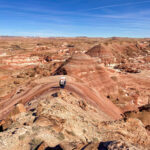
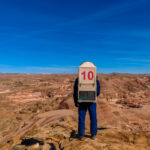

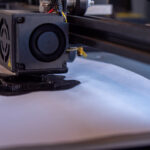
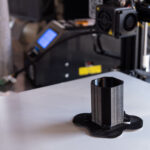

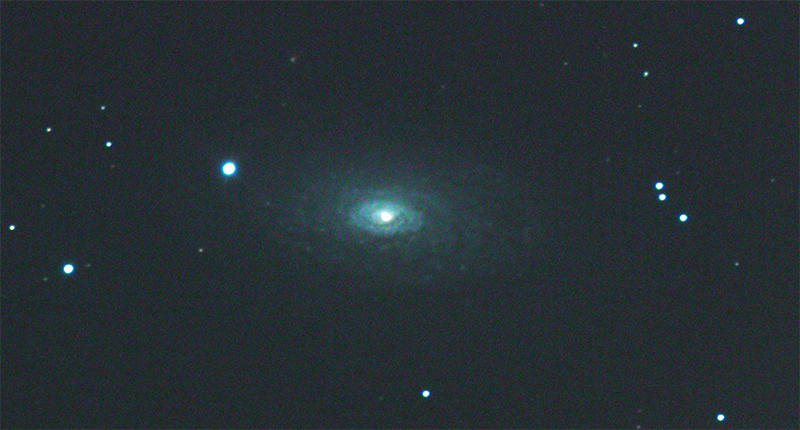
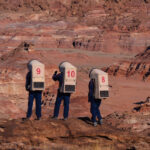
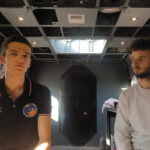

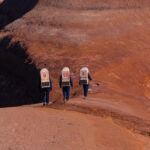
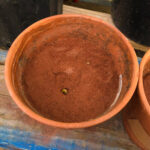
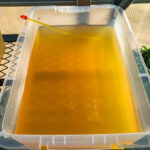

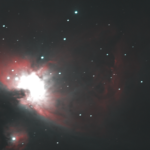

You must be logged in to post a comment.